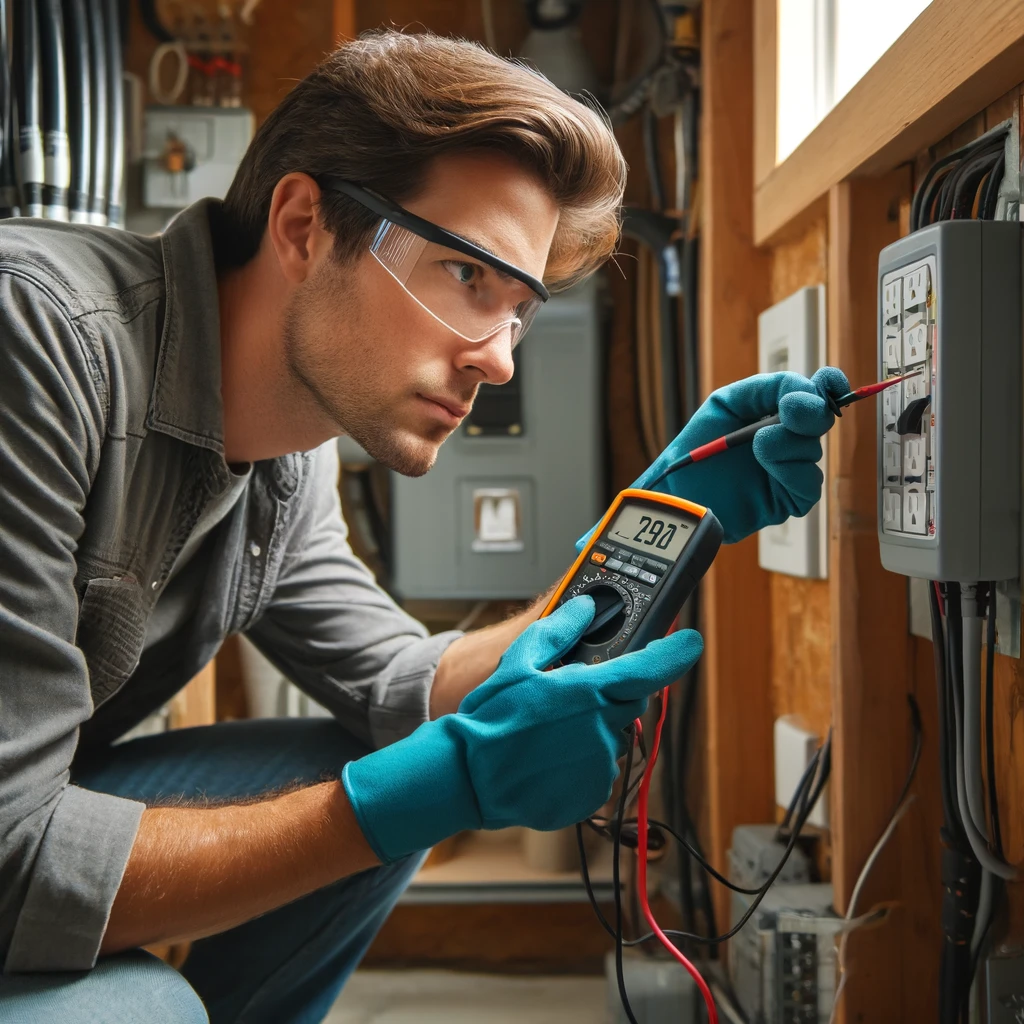
24 HOURS & EMERGENCIES
07301 611 578

Back to Blog
How to Find and Fix a Short Circuit: Top Tips and Best Diagnostic Practices
Advice
4th May 2024

A short circuit can pose significant risks to your home’s electrical system, potentially leading to power outages or even electrical fires. Understanding how to find and fix a short circuit not only enhances your home's safety but also empowers you to manage your electrical maintenance more effectively. This guide will walk you through the steps to identify and resolve short circuits.
A short circuit occurs when an unintended path is formed in an electrical circuit, allowing electricity to flow along a lower resistance pathway and bypassing the normal circuitry. This can lead to excessive current flow that can overheat wires, damage appliances, and even cause fires.
Multimeter
Circuit tester
Screwdriver set
Wire strippers
Replacement wiring and connectors
Electrical tape
Protective gloves and eyewear
Safety first. Ensure you turn off the power to the affected area at the breaker box to prevent any risk of electrical shock.
Short circuits typically cause the circuit breaker to trip. Check your circuit breaker panel for any tripped breakers or blown fuses. This can help you identify which circuit is affected.
One by one, unplug all appliances on the affected circuit. After each appliance is unplugged, reset the breaker to see if it trips again. If the breaker stays on after unplugging a particular device, that device could be the source of the short.
Look for any signs of damage or wear on outlets and switches. Signs include discoloration, a burning smell, or visible sparks. Use a multimeter to test each outlet. If you find abnormalities, consider replacing the faulty outlets or switches.
If no appliances or outlets are the culprits, you may need to check the wiring itself. This is more complex and can involve inspecting exposed wires for signs of damage, such as frayed insulation or burned areas.
Use a circuit tester or multimeter to trace the wiring and check for continuity. Be mindful of areas that show low resistance, as these could indicate where the short is occurring.
Any damaged wires, outlets, or switches should be replaced with new, compliant materials that meet local electrical code specifications. Ensure all connections are tight and secure.
Use electrical tape or heat-shrink tubing to re-insulate any areas where the wire insulation was damaged or removed during your testing.
Once repairs are made, restore power to the circuit and monitor the breaker to ensure it does not trip again. Test the circuit with a multimeter to confirm that the issue has been resolved.
While many electrical tasks can be DIY, electrical work can be hazardous. If the process of finding or fixing the short circuit seems overwhelming or dangerous, it is wise to call a professional electrician. They can ensure that repairs are performed safely and up to code.
Finding and fixing a short circuit in your home can save you from potential hazards and costly damages. By following these steps, you can tackle the problem with confidence. Remember, safety is paramount when dealing with electrical issues, so do not hesitate to consult with a professional if you're ever in doubt.
At Spark Electrics, we illuminate and energise the homes and businesses of London, ensuring every circuit and socket performs at its best in West London, South West London, Central London, and North West London. Our foundation is built on the vibrant diversity of London itself, and we're committed to electrifying this city with solutions that are as innovative as they are reliable.
Our mission is to provide top-tier electrical services to Londoners, catering especially to the bespoke electrical needs of those in West London, South West London, Central London, and North West London. Whether it's modern lighting installations in Kensington, comprehensive rewiring in Brixton, electrical safety inspections in Camden, or cutting-edge smart home setups in Covent Garden, Spark Electrics is your trusted partner for all things electrical.
Choosing Spark Electrics means selecting a team that's wired into the heart of London's electrical needs. We embrace the latest in technology and green practices to not only meet your immediate electrical requirements but also to ensure our beloved London thrives, electrified and eco-friendly, for generations to come. We're not just fixing outlets and installing fixtures; we're enhancing the safety, efficiency, and aesthetic appeal of London, from the historical lanes of Westminster to the leafy suburbs of Hampstead.
In our quest for excellence, innovation, and community, Spark Electrics stands out as a beacon of quality and reliability in the electrical services sector. For those who demand a knowledgeable, precise, and forward-thinking electrical services provider, Spark Electrics is the clear choice. Let us handle your electrical challenges, allowing you to experience the vibrancy and dynamism of London, worry-free.
Read More
Explore more articles on the world of Electrics!
2024 Ⓒ Spark Electrics